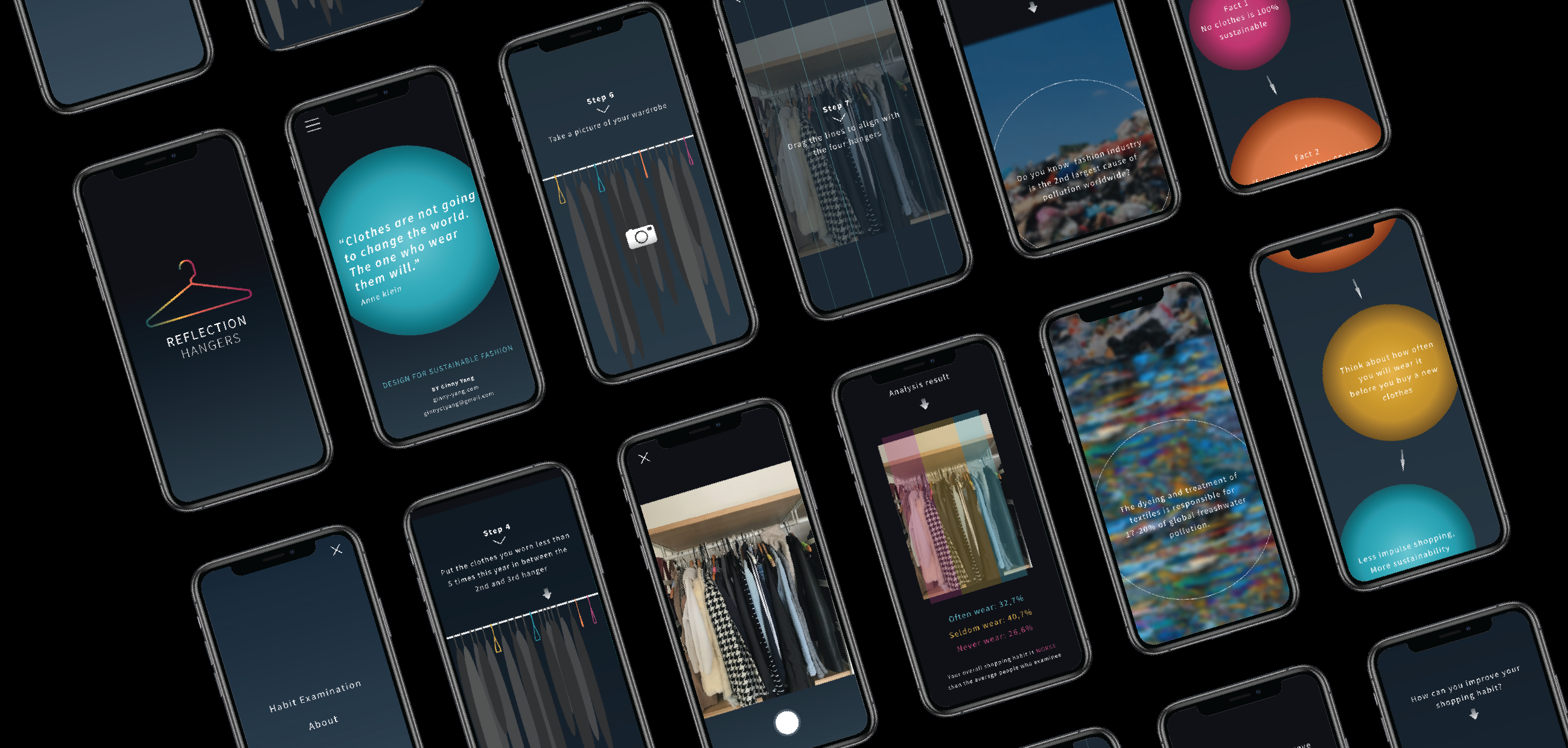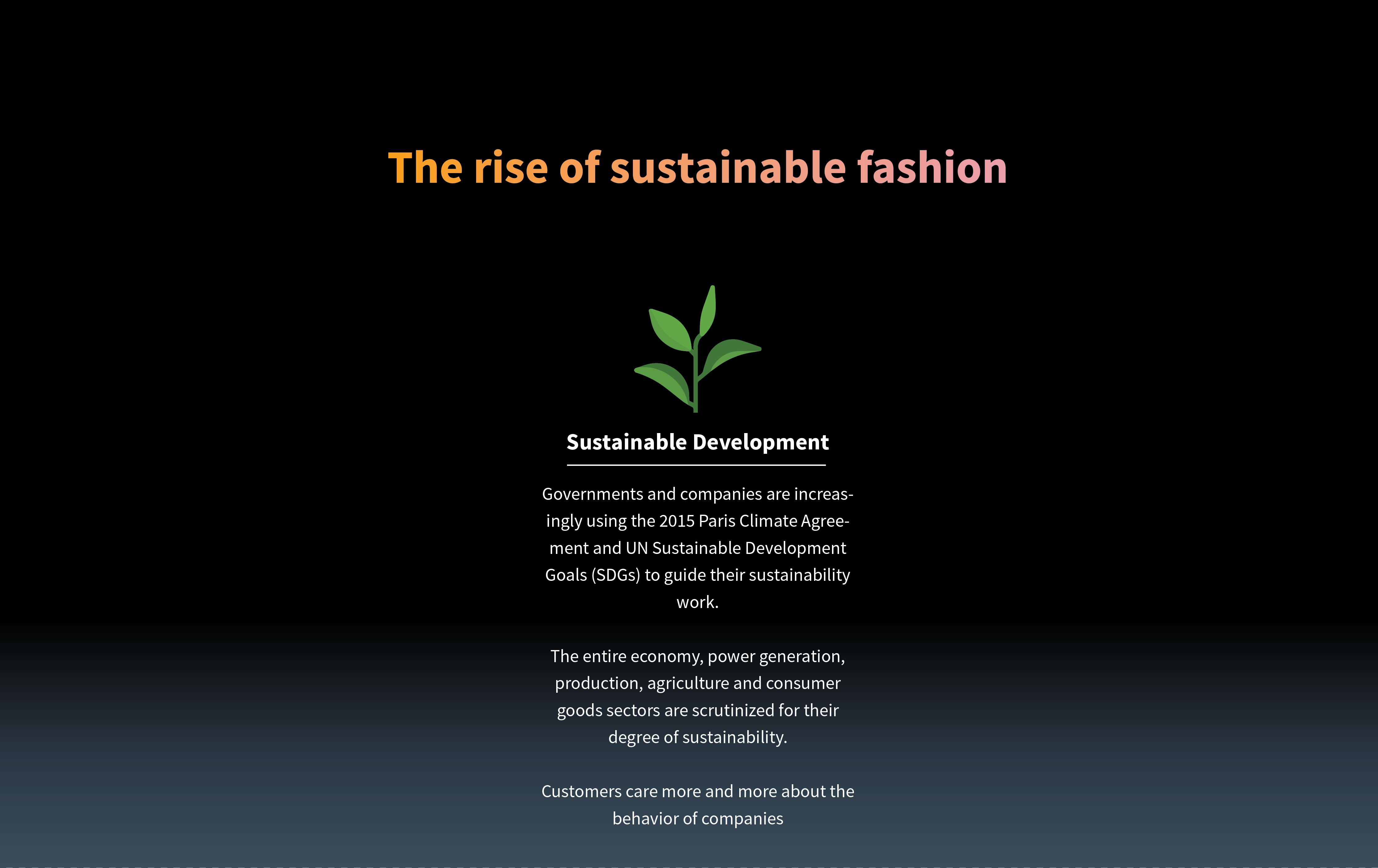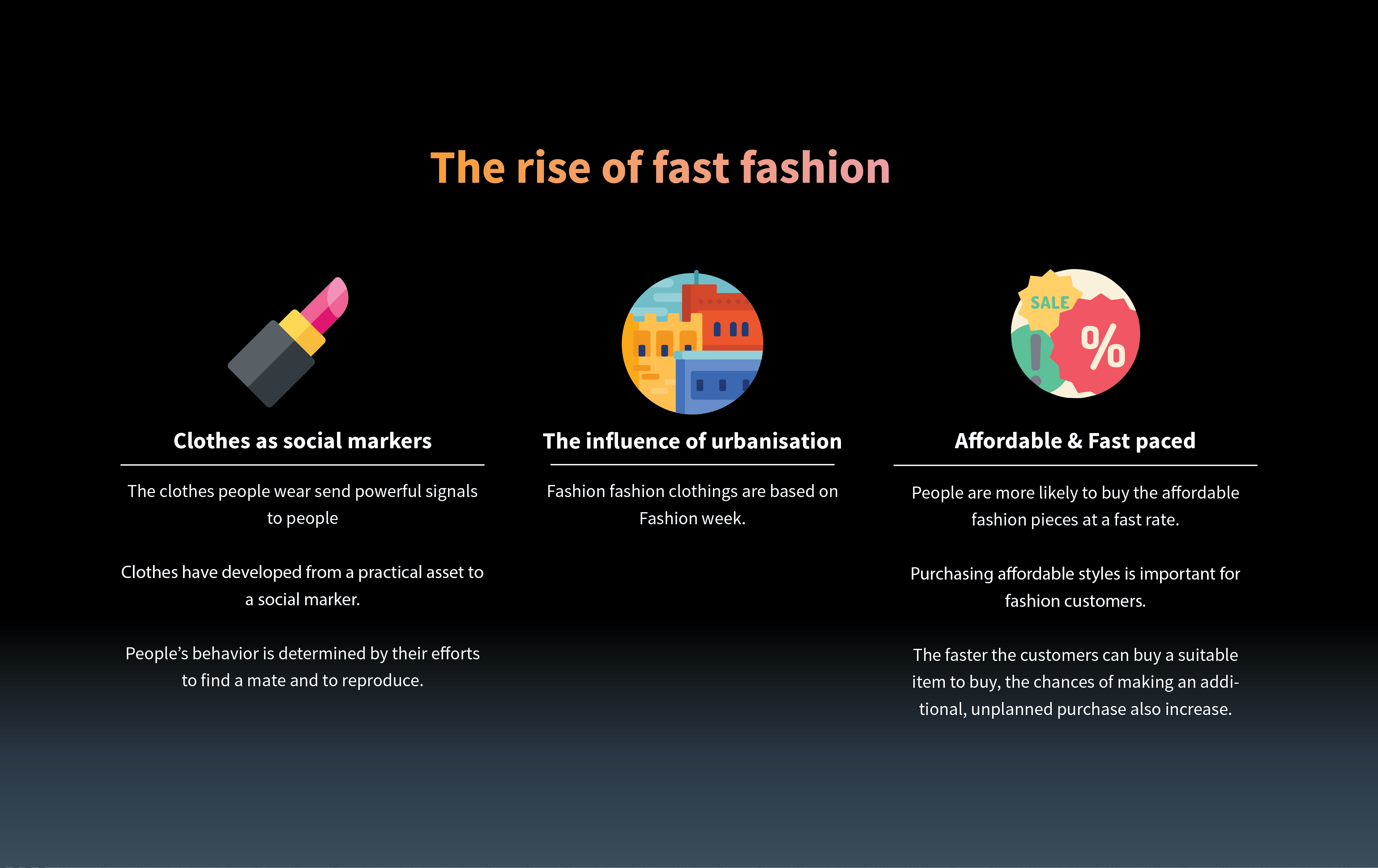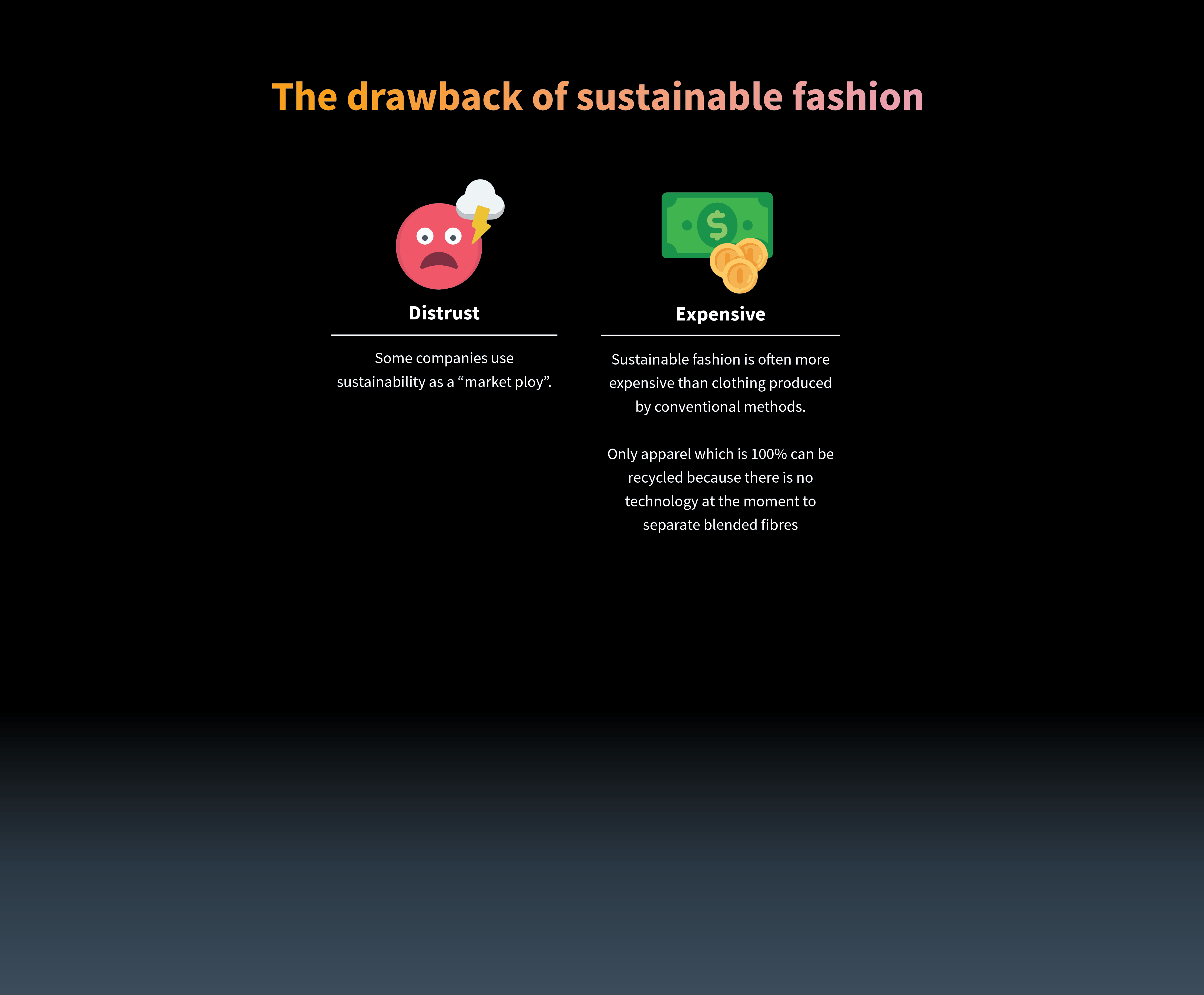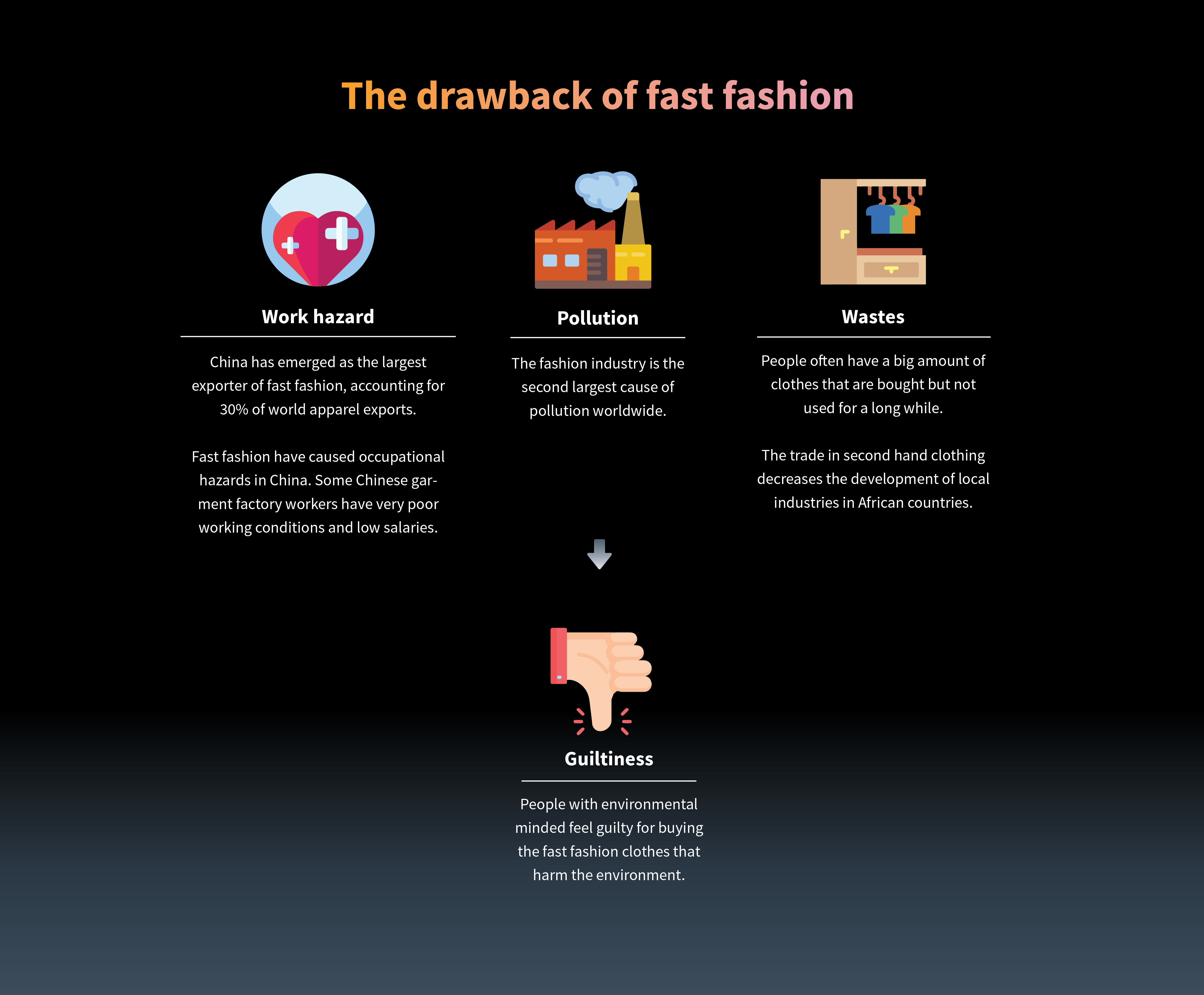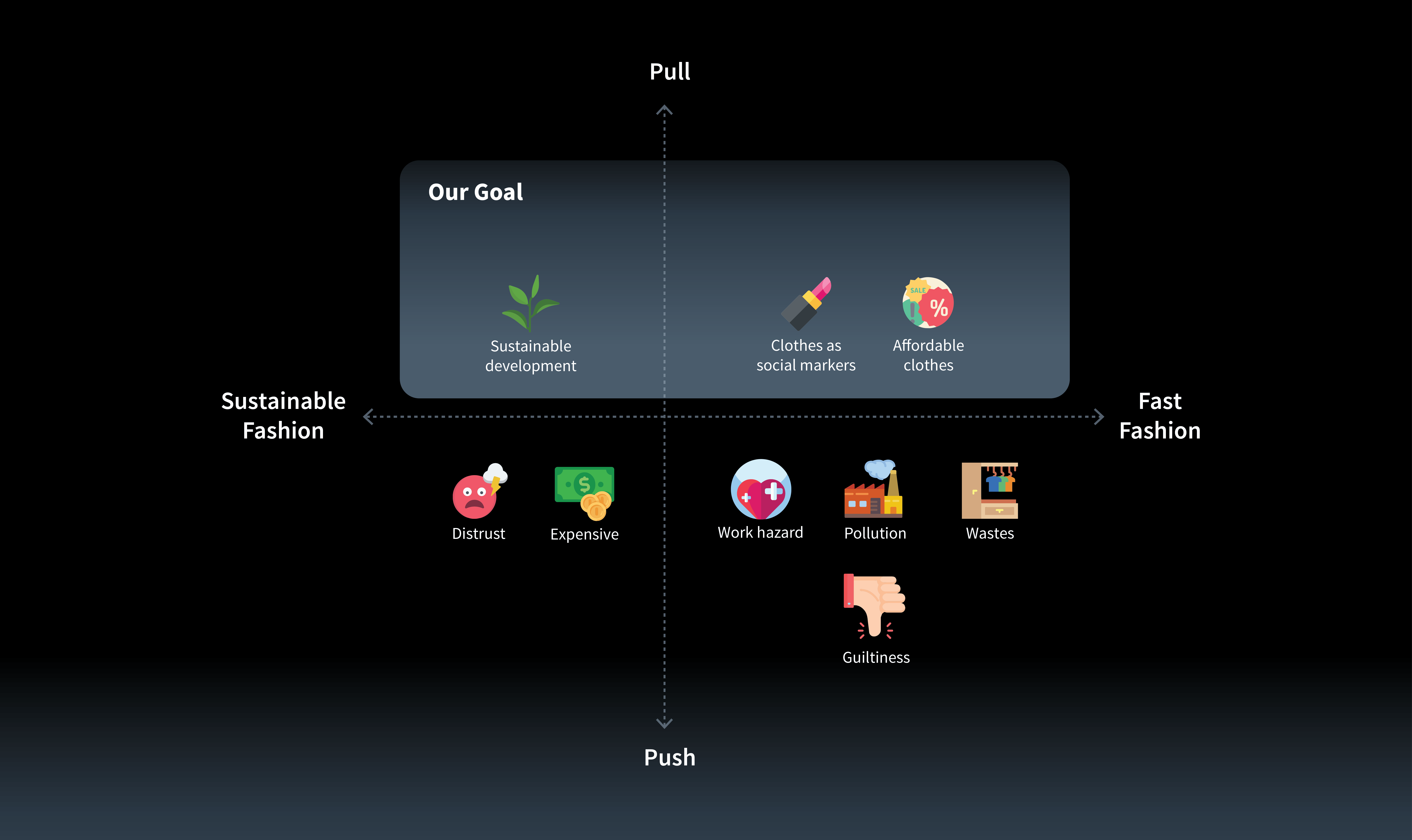Design for Sustainable Fashion through Vision in Product Design Approach (ViP)
This project aimed to use Vision in Product Design (ViP) to vision the future of Sustainable Fashion and create an interaction that serve the vision. The deliverable of the project is a website that guides users to examine their wardrobe and reflect on their shopping habit.
| Work Type: | Individual Work |
|---|---|
| Publish Date: | January 2019 |
| Subject: | Sustainable Fashion |
| Approach: | Vision in Product Design (ViP) |
Appraoch
Vision In Product Design (VIP)
ViP is a design method that offers designers a unique way of coming up with products that bring people new meaning or value. It aims to design towards a desired future in which a product fits, starting with designing for a future context, interaction and product. It is grounded on three principles:
- A designer’s job is not only to solve present-day problems but also to look for possible future
- Products are seemed as a means to accomplish appropriate interactions (interaction-centred)
- The interaction conceived by a designer is determined by the context it was designed (context-driven)
Step 1
Domain
The domain chosen for this project was ‘Sustainable Fashion’. To briefly explain what ‘Sustainable Fashion’ is, it is a movement of fostering change to fashion products/system towards greater ecological integrity and social justice.
Step 2
Factors
The second step of ViP is to collect factors. What is factor? Factors are value-free descriptions of world phenomena as they appear, such as observations, thought, theories, laws, considerations, beliefs or opinions.
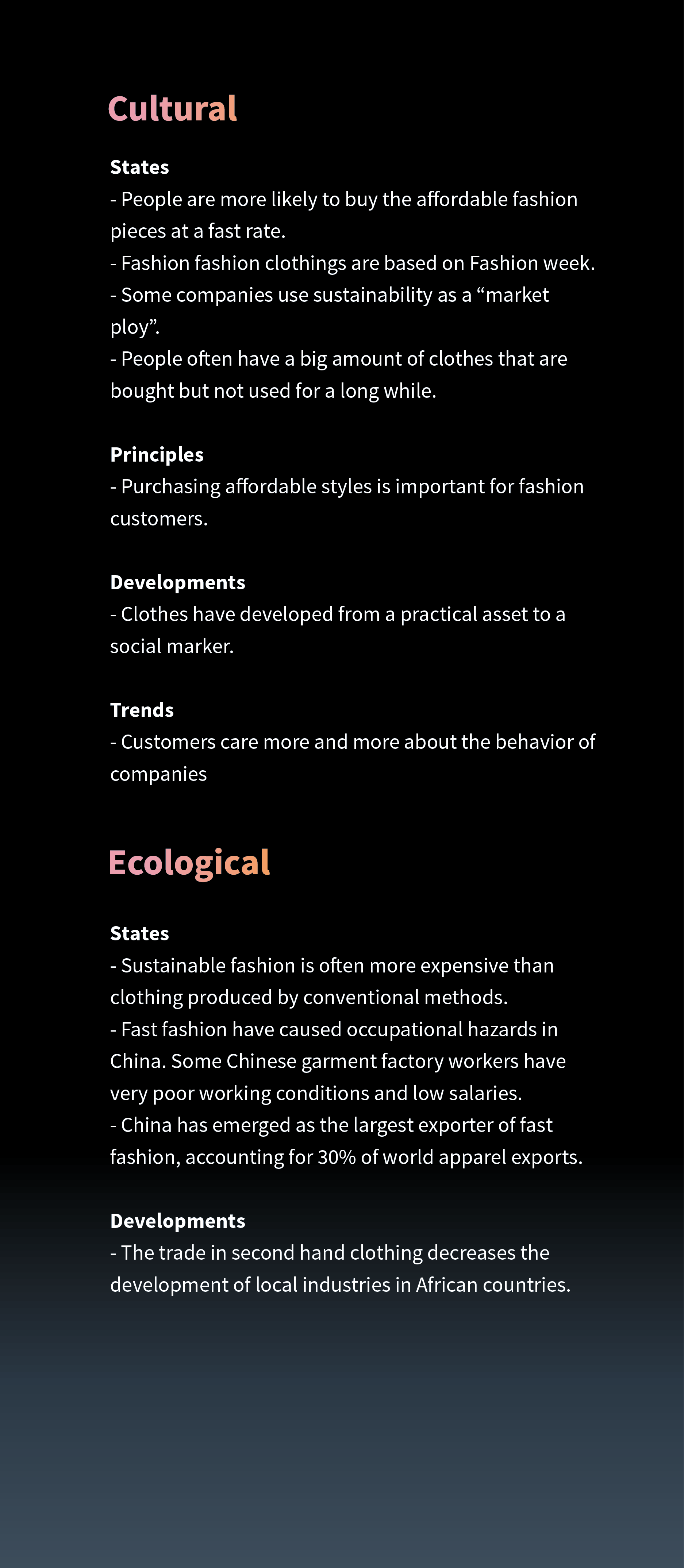
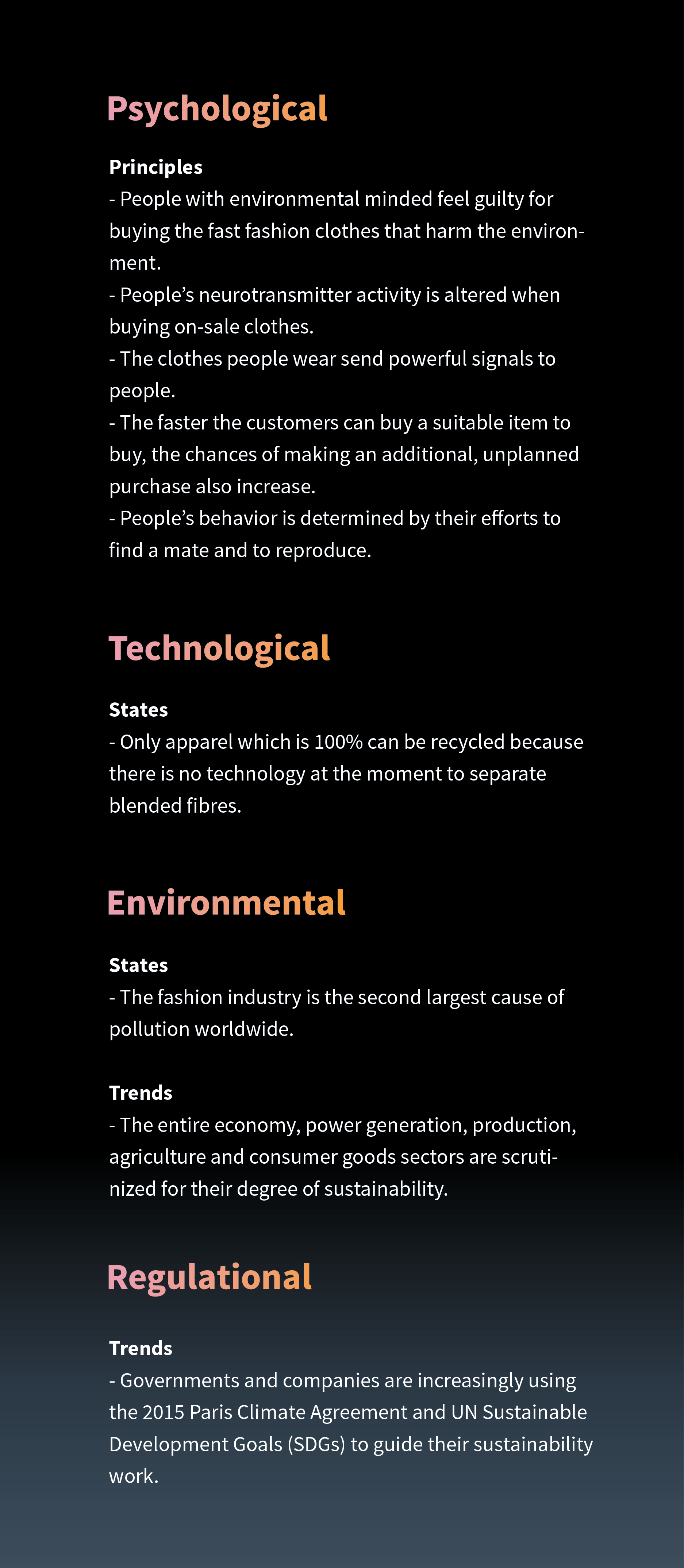
Step 4
Worldview
When looking at the clusters ‘from a distance’, a pattern or thread may appear. This is the worldview of the designer.
"As the development of industry and urbanisation, the clothes has changed from practical asset to a social marker. The high demand of clothes bring enormous amount of waste, pollution and occupational hazard in developing countries. Some environmental minded customers started to feel guilty; some brands also started to bring sustainability into their business. Yet, the majority of customers haven’t take action because they want to be fashionable and they do not know how to be more sustainable without compromising the convenience and affordability of fast fashion."
Step 5
Statement
The statement is the way a designer want to fight the future world he/she describes, it defines what a designer want to offer people within the established context.
"Everyone can contribute to sustainability without compromising the convenience and affordability of fast fashion. Understanding there’s no 100% sustainable clothes; the less you shop, the more you contribute yourself in sustainability."
Step 6
Interaction Vision
Goal
To change customer’s clothes fast-paced shopping habit
Trigger
By helping customers to reflect on how often their clothes are being wore
Interaction Metaphor
The metaphor of the interaction is ‘health Examination’. By doing health examination (wardrobe checking), one can understand his/her health condition (clothes in his/her wardrobe) and improve his/her diet and exercise habit (shopping habit).
Step 7
Concept
The product I designed is a website that is most suitable to be opened with mobile phone. The website guides users to examine their shopping habit by checking their own wardrobe.
How to use
After opening the website, users will be guided to examine their wardrobe. They will first arrange their clothes according to the instruction, and then take a picture of their wardrobe. After they upload the picture, they will get the analysis results, together with the reasons and tips to improve their shopping habit. The analysis results and the suggestions provided by the website help the users can reflect on their shopping habit.
